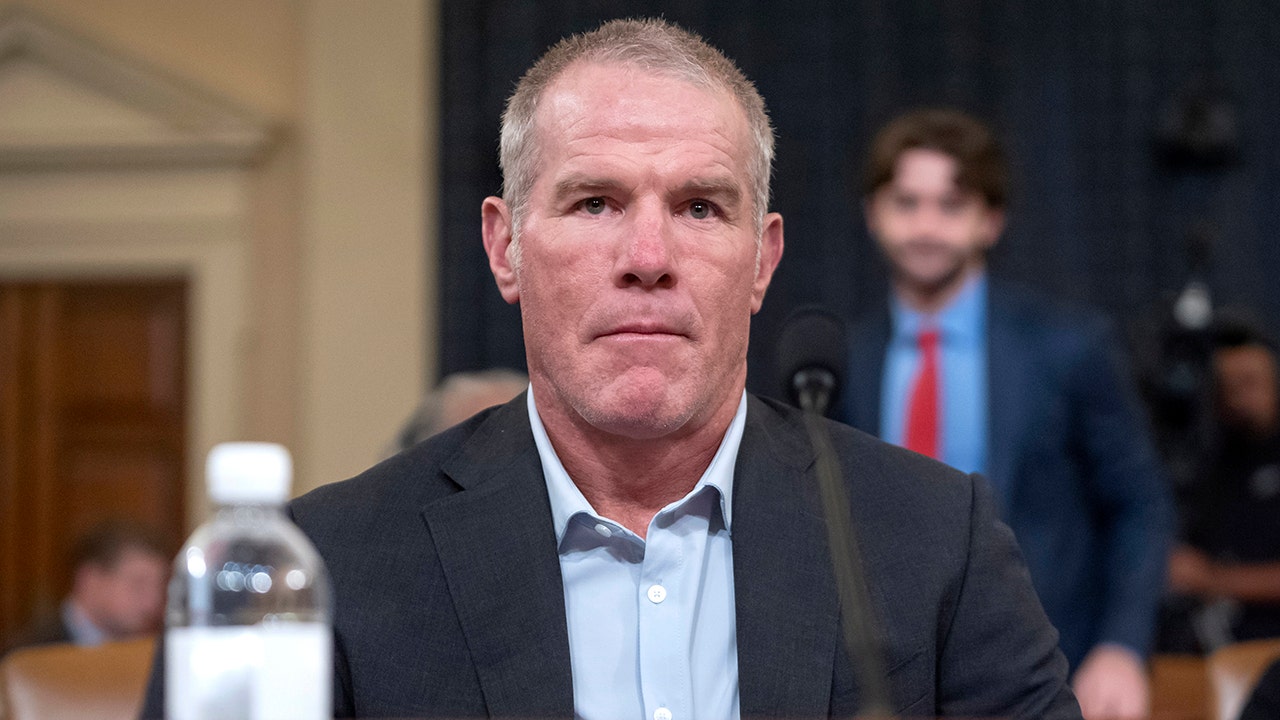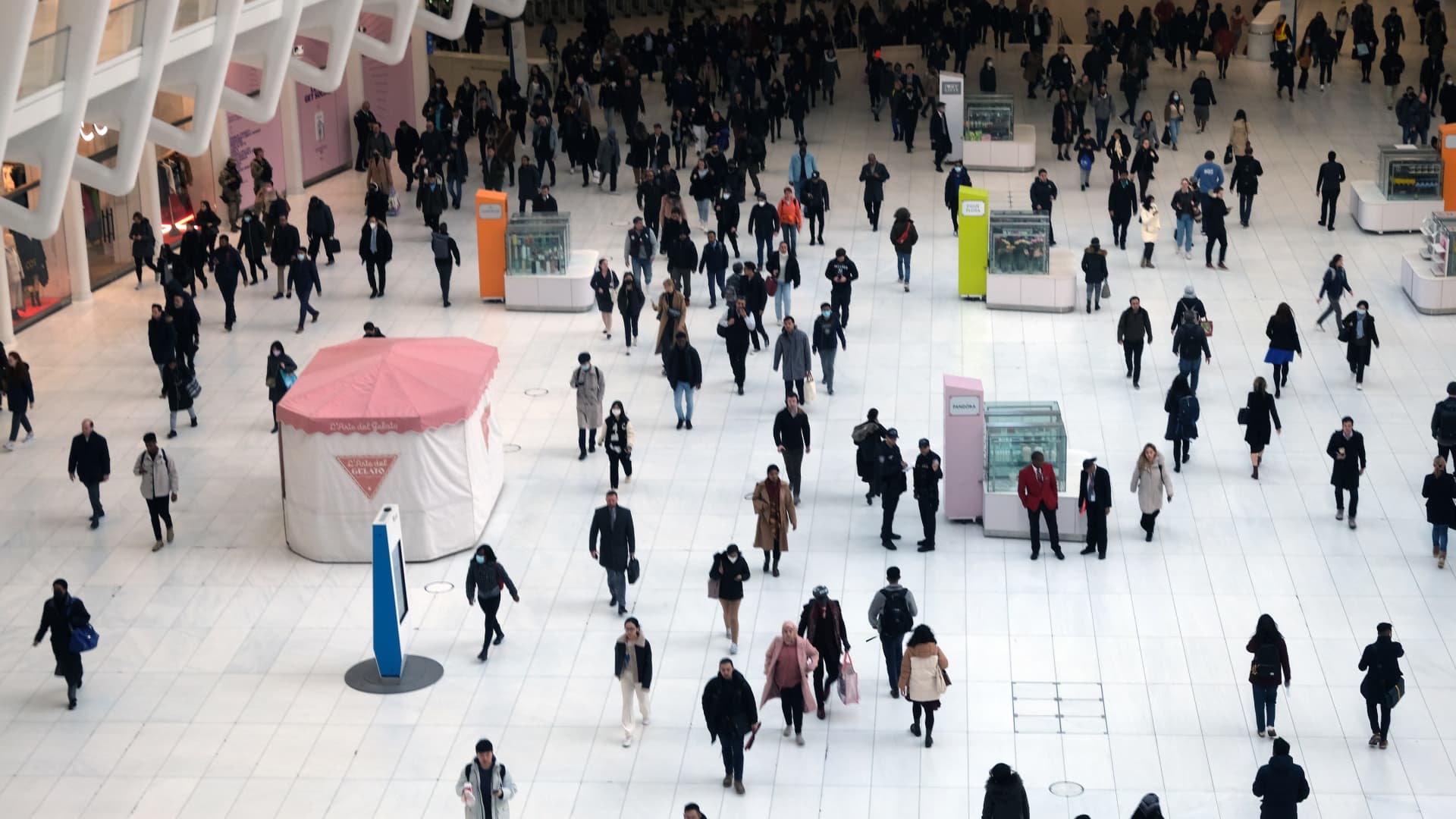Commuters arrive into the Oculus station and mall in Manhattan on November 17, 2022 in New York City.
Spencer Platt | Getty Images
Many restaurants and hotels in city downtowns are seeing sales come back to pre-pandemic levels — but only on Tuesdays, Wednesdays and Thursdays.
In cities such as New York, Los Angeles and Atlanta, the three-day in-person work week has posed challenges for hospitality businesses. With fewer workers in offices on Mondays and Fridays — which for some businesses were their strongest sales days — many businesses have been forced to shift work schedules or launch initiatives to pull in customers at the start and end of the week.
Amali, a restaurant on the edge of midtown Manhattan, is pulling in as little as a quarter of midweek business on Mondays and Fridays, said managing partner James Mallios.
Hotels are also seeing slower starts and ends to the week for business travelers. However, hotels throughout California have been seeing more instances of combined business and leisure travel, according to Pete Hillan, a partner at public relations firm Singer Associates, which has clients in the hospitality industry.
WFH Research, which conducts surveys and research projects on working arrangements and attitudes, released findings last week showing that remote work is costing cities billions a year. According to data collected from June to November, the per-person reduction in spending in New York City was $4,661, followed by $4,200 in Los Angeles and $4,051 in Washington, D.C. The study outlined a dozen cities with a reduction in yearly spending of over $2,000 per person.
In-person work days declined the most, 37%, in Washington, compared with pre-pandemic levels, followed by Atlanta at 34.9% and Phoenix at 34.1%. The information, finance, and professional and business services sectors lead in working from home.
According to WFH Research co-founder Jose Maria Barrero, 28.2% of employees are hybrid — working some days in the office and some days remotely — compared with 12.7% who are fully remote. Although 59.1% of workers are full-time on site, hospitality businesses catering to office workers are still struggling to make ends meet, Barrero said. WFH Research found that just 5% of paid work hours were remote pre-pandemic.
Andrew Rigie, executive director of the New York City Hospitality Alliance, said people are more likely to spend more on breakfast or lunch, or go out to happy hour after work, when they are in commercial districts, compared with the amount they spend at restaurants and bars in their own neighborhood when they work remotely.
The demand for corporate dinners and catered meals has in many cases not gone away, though.
“We have found that there is significant demand from the business community, both from a lunch standpoint but really entertaining happy hour later, to many degrees at a higher level than pre-pandemic,” said Steve Simon, partner of Atlanta-based Fifth Group Restaurants.
From city centers to suburbs
This month, the only Ruth’s Chris Steakhouse location in Manhattan announced it would close in April, and numerous midtown Manhattan restaurants, including upscale Thai-inspired Random Access, have shuttered.
“Even though you may be busy on Wednesday and Thursday, your Mondays and Fridays may be very slow,” Rigie said. “If someone was to walk by a restaurant around lunch or dinner time on a Thursday, they may say, ‘Wow, that restaurant’s packed, they’re so busy,’ but it’s not like that every single day.”
The Bureau of Labor Statistics found in a study that increased remote work results in a reduction in foot traffic for urban centers. A 10% decline in foot traffic in a census tract leads to a 1.7% decline in employment for food services and accommodation, as well as a 1.6% decline in wholesale trade and retail trade employment.
Areas with positive increases in traffic had employment increases in the same sectors.
“Especially because the census tracts that had increases in foot traffic are more of the suburbs, moving away from the dense urban parts, then what that’s implying is that employment seems to be doing better in the restaurants, bars, and retail trade in these more suburban, less dense census tracts,” said Michael Dalton, a research economist at the bureau who led the study, which was published in August.
WFH Research’s Barrero said significant spending has moved to locations outside of downtowns, hurting city centers.
“To the extent this shifts away from New York City to adjacent counties within the metro area, then that means a loss of sales tax for the city,” he said. “That goes hand in hand with a loss in transit ridership revenues and so on.”
Over the past six months, Barrero said, data has shown stable amounts of total days worked from home for the aggregate economy just shy of 30%. There was a reduction in remote work in January to about 27% from 29%, though he predicts remote work levels will not drop below 25% in the near future.
“The bad news for these restaurant owners and so on is that I don’t think we’re going back to normal, and we’re probably kind of very near to where the new normal is,” Barrero said.
Restaurant resiliency
Rigie, of the New York City Hospitality Alliance, said full-service restaurants may have more consistent business in the long term, due to tourists and people who go to shows, than fast-casual, limited-service restaurants, which cater more to office crowds. However, full-service restaurants, which have higher overheads, will continue to deal with staffing shortages, he said.
“If employees are realizing, why am I at this restaurant if a lot of nights are not as busy and I’m not earning as much, they may go to a restaurant in another neighborhood where it’s busier earlier in the week,” he said.
Emily Williams Knight, CEO of the Texas Restaurant Association, said restaurants in Texas downtowns are seeing two different types of workforce recoveries. She said Houston reported that office space is 60% full with a 30% vacancy rate, while Austin has led the nation in the return to in-person work.
On a recent trip to downtown Houston, Williams Knight said she “had never seen streets empty as I saw them in the middle of the week, in the middle of the day.” She added that the return of conventions and business travel has been particularly slow.
Houston and Dallas, which have average commute times of almost half an hour, have experienced small lunch and happy hour crowds on weekdays over the past few months. Combined with four-decade-high inflation and labor costs up over 20% the last two years, some restaurants have been forced to close or relocate, she said.
“When you had five, six, seven restaurants within blocks of each other, and you could choose, you would make an attempt to go into the city and eat at your favorite restaurant,” Williams Knight said. “Now, that lack of selection is also keeping people at home, and all of those sort of dovetail into that spending isn’t happening.”
Nick Livanos, proprietor of Livanos Restaurant Group, has two restaurants in Manhattan and two in Westchester. While the Westchester restaurants have more consistent lunch and dinner services, he said, Oceana in Midtown has “extremely busy” Tuesdays, Wednesdays and Thursdays, but much weaker Mondays and Fridays.
Molyvos, the group’s upscale Greek restaurant, moved out of Midtown in November into a smaller space in the more residential Hell’s Kitchen. He said the new location has attracted longtime residents who are more loyal, like the Westchester crowds.
Rigie said downtowns need to focus on appealing to not just office workers but also tourists and residents of nearby neighborhoods, while also modifying hours, cutting expenses and establishing relationships with local businesses as remote work continues.
And despite discussions about repurposing many low-occupancy office buildings into residential units, restaurants may not benefit from that for years.
A handful of independent single-unit restaurants in Houston and Dallas are moving to the suburbs.
Tracy Vaught, who owns five restaurants in the Houston area, said business from office workers at downtown locations only picks up later in the week. Four of her restaurants are now closed Mondays, and another is closed Tuesdays and Wednesdays for lunch. She anticipates business will pick up at all locations as spring approaches.
“The suburbs’ restaurants are suffering from the same things that the downtown or the office park-type restaurants are suffering, and that is that not everybody’s back to work,” Vaught said.















































